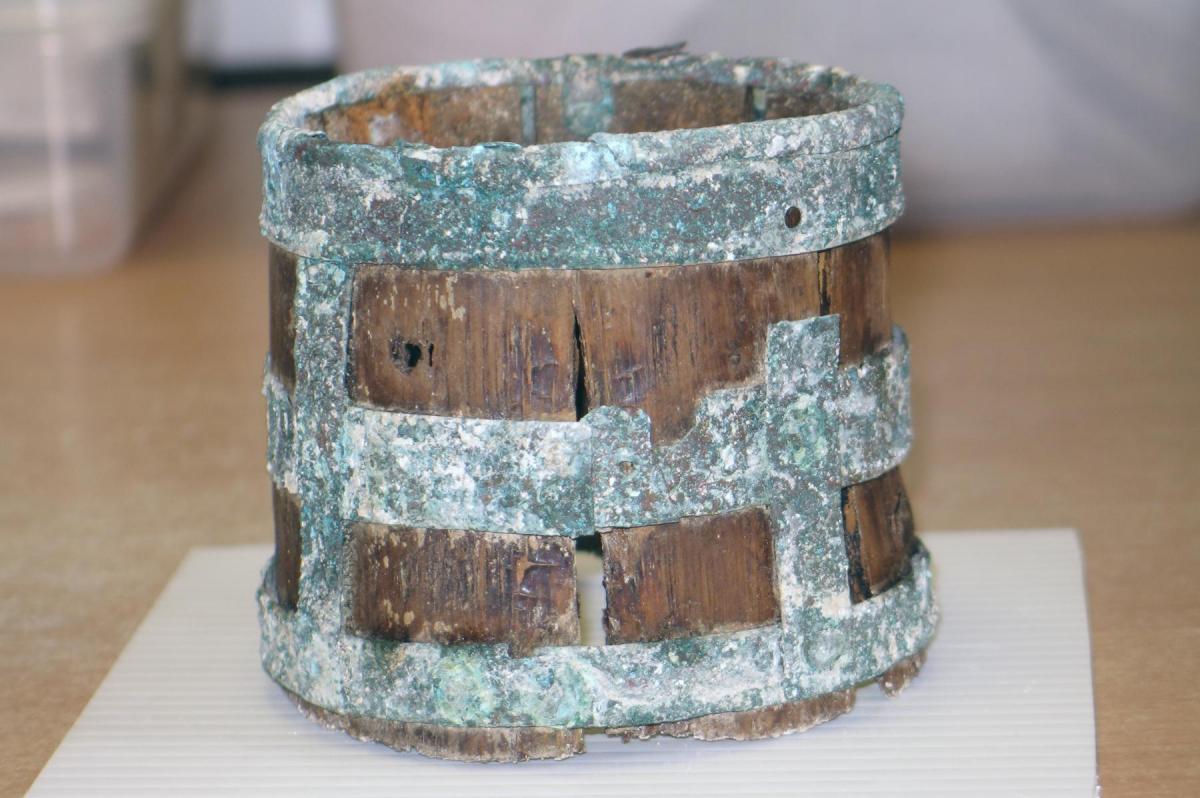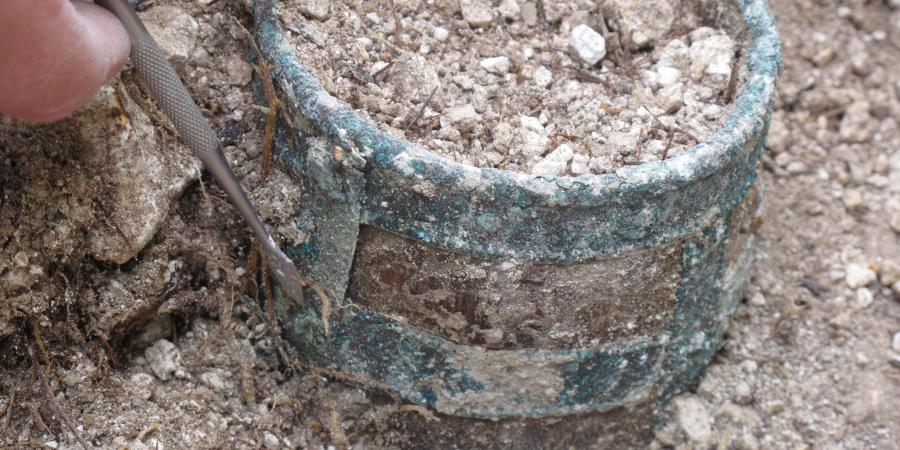Lifting and conservation of a composite bucket
During excavations at Barrow Clump in 2012, as part of Operation Nightingale, a number of Saxon graves were excavated, containing a range of grave goods – weapons, jewellery, and other items. One of the most interesting of these objects was a small wooden bucket, which required intricate conservation work to lift, consolidate and preserve it – a real challenge to the conservator.The bucket was carefully loosened from the surrounding soil and cushioned with bandages for lifting. It is about the size of a tankard and has three decorated copper alloy bands holding the wooden staves in place. Nearly all the wood has survived, which is unusual, but the base has been lost. It is still possible to see part of the groove along the bottom of some of the staves where the base would have fitted. Strips of decorated copper alloy, fixed with rivets, run vertically down the bucket and hold the bands in place.



The bucket was lifted with its contents still inside, as this reduced the risk of collapse. However, the chalk inside the bucket acted as a poultice and made the bucket so damp that the copper alloy bands started to corrode. The contents had to be removed straight away and were retained for future investigation. A light spring was put inside the bucket to reduce the chances of it collapsing in on itself.
The bandaging was removed from the outside of the bucket and the soil removed from the wood surfaces. At this stage there was barely anything holding the bucket together and, as the wood was so fragile, it was consolidated to give it some strength, using a plant-based material that is sympathetic to the physical properties of the wood.
The copper alloy bands were then attached at intervals to the wooden staves. This held the whole bucket together, but allowed for a certain amount of movement. This had to be done very carefully so that the bucket did not collapse completely.
The bucket is now being kept in a controlled environment so that the wood does not shrink and the copper alloy is less likely to corrode again.





